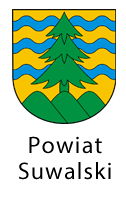Information about Poviat Suwalski
History
The first settlers in today?s Suwalszczyzna (Suwałki region) were Yotvingians who settled here around 500BC. The Yotvingians inhabited the area from the neighbourhood of Wiżajny in the North to the Biebrza Valley in the South. The western border of their settlement was the belt of the Great Masurian Lakes District.
The Yotvingians formed a loose confederation based on family and tribal ties. The tribes were governed by councils of elders.
Natural Environment
Geographically, Suwalszczyzna (the Suwałki subregion) is part of the Lithuanian Lakeland, on the Lithuanian side it is called Suvalkija. Its climate is heavily influenced by Arctic and continental winds. And it is due to the impact of the cold winds that the region ranks among the coldest areas of Poland. Winter lasts here from 100 to 120 days, summer is usually short and hot.
The Suwałki land is one of the most picturesque regions of Poland, nature assorted here an exceptional variety of land surface forms.
Economy
The Poviat of Suwałki is a typical farming area. The fact is reflected in the Poviat land use structure: arable land - 70%, forests 17%, waters - 8%, other use - 8%.
The soils capability and climactic conditions of the Poviat are below average for Poland, showing distinctly shorter vegetation periods.
The strong variation of land surface causes intensive runoff and irreversible loss of part of the beneficial for agriculture precipitation water. In spite of the difficult agricultural conditions, farms cover 79% of the area of the Poviat.
Poviat of Suwałki
Area: 1308 km2
Inhabitants: 35.6 thousand
Number of Communes: 9
The Poviat of Suwałki is situated in the north-eastern corner of Poland and is one of the 17 poviats (counties) of the Podlaskie Voivodship. It is composed of nine rural communes:
- Bakałarzewo,
- Filipów,
- Jeleniewo,
- Przerośl,
- Raczki,
- Rutka-Tartak,
- Suwałki,
- Szypliszki
- Wiżajny,
covering the total area of 1308 km 2.
The city of Suwałki constitutes also a separate municipality.
The Poviat of Suwałki borders on Lithuania in the north and the Oblast of Kaliningrad, Russia, at the triple junction of the borders. Due to the Poviat's border location one border crossing is situated on the territory of Suwałki Poviat, in Budzisko, and three others in its proximity: Gołdap, Ogrodniki and Trakiszki.
The Poviat is situated at the international transit route Scandinavia ? Southern Europe (the future Via Baltica), ca. 300km from the capital of Poland, Warsaw, and 120km from Białystok, the capital of the province.
The Poviat of Suwałki counts 35.6 thousand inhabitants, 27 persons per 1km2 , which accounts for 3% of the population of the Podlaskie Voivodship.
The area of the Poviat differs distinctly to the rest of the Voivodship. It owes its distinct character to the unique variety of landscapes, individual features of climate and natural world. The same concerns the history of the local settlement and the land's economic development, and even the ethnic composition of its population.
Geographically, Suwalszczyzna (the Suwałki subregion) is part of the Lithuanian Lakeland, its climate heavily influenced by Arctic and continental winds. And it is due to the impact of the cold winds that the region ranks among the coldest areas of Poland, the neighbourhood of Wiżajny is known to be the ?Polish pole of cold?.
Winters here are long and frosty (even twice longer than winters in western Poland) and summers are usually short and hot. The area features strong climactic contrasts, the most extreme temperatures recorded being +36°C and -38°C.
The climactic peculiarity is paralleled by the special character of the local flora with many rare boreal species and post-glacial relics, including also some specimens of mountainous plants. The great variety of the natural environment is conducive to preservation and development of a diversified range of animal species.
The Suwałki region features also a greatly diversified lay of the land. From the elevation of 120m in the south of the region to ca. 300m above sea level in the north. It is a land of contrasts and unique concentration of a great variety of postglatial terrain forms. The middle part of the Poviat is occupied by the Suwałki Landscape Park (Suwalski Park Krajobrazowy) ? the oldest of its type protected landscape area in Poland, featuring moraine uplands, kames, eskers and hanging river valleys.
Natural gems are the local water reservoirs: from charming springs to the watercourses of the three emblematic rivers of the region: Rospuda, Szeszupa and Czarna Hańcza, and numerous lakes.
There are here 111 lakes of more than 1 hectare in size, covering the total surface of 602 hectare. The largest of these is Lake Wigry (2098.66ha), whereas the deepest and at the same time the cleanest is Lake Hańcza (108.5m deep).
The variety of the animal and plant species, clean air and water, forests and diversified landscapes all contribute to the beautiful image of the Suwalszczyzna today, protected by the Wigry National Park (Wigierski Park Narodowy), Suwałki Landscape Park, nature reserves and other forms of nature conservation. The area of the Poviat is included in the Green Lungs of Poland programme and European nature conservation programmes. The natural advantages of the Poviat of Suwałki place it high in the ranking of the most interesting tourist destinations of Poland.
Across the Suwałki land run tourist trails (footpaths, cycle paths and horse trails) leading to the cleanest and most beautiful nature spots arranged for active recreation. The two largest rivers of Suwalszczyzna: Hańcza and Rospuda are also the most attractive canoeing routes.








